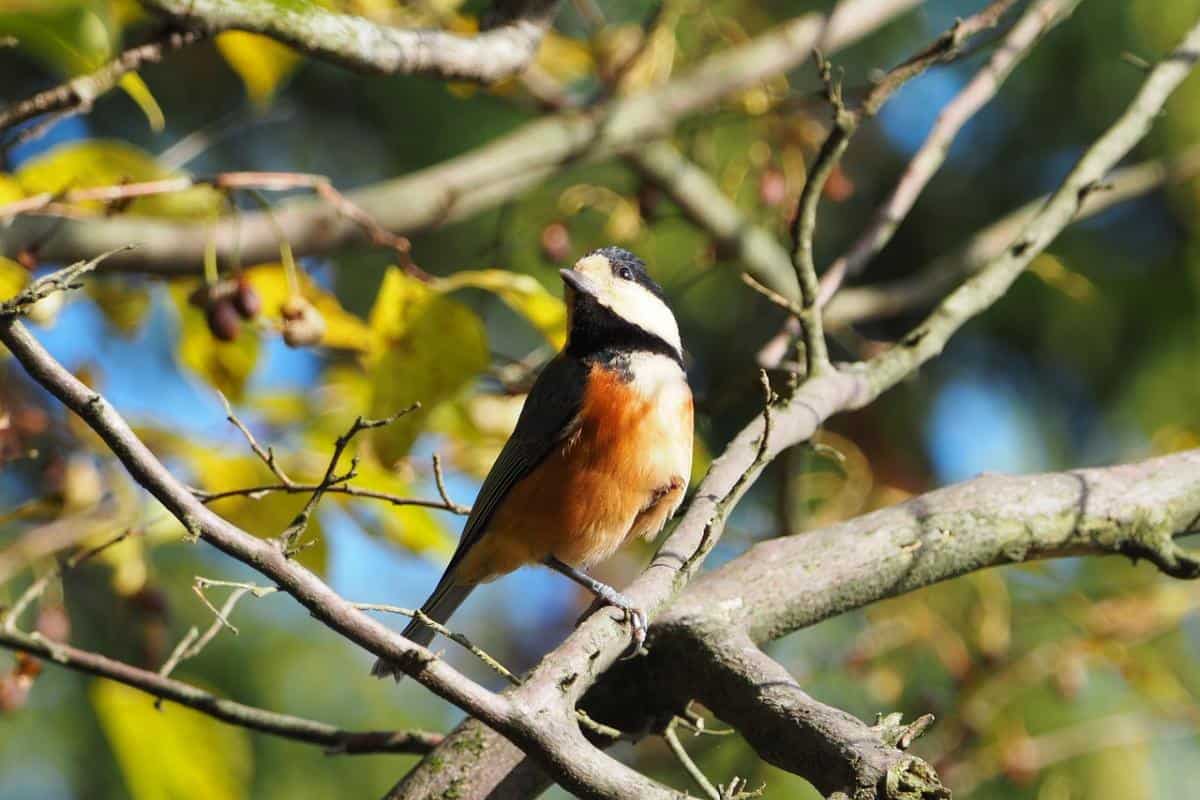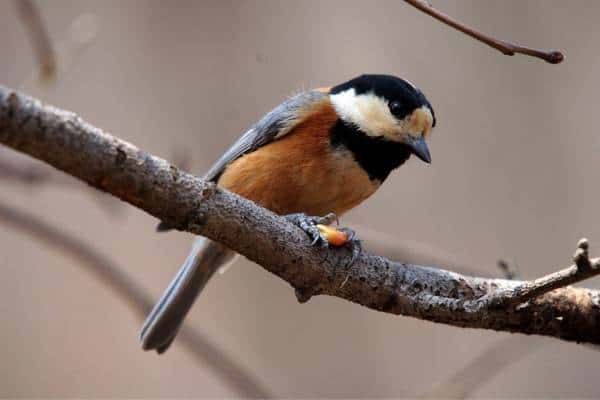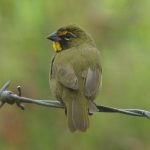Common Name: Varied Tit
Scientific Name: (Sittiparus varius)| Size | Diet | Range in Hawaii | Status in Hawaii |
|---|---|---|---|
| 4.5 in | beetles, caterpillars, spiders, and other small invertebrates | Unknown | Least Concern |
The Varied Tit (Sittiparus varius) is a small and colorful bird species that is native to East Asia. With its distinctive black and white plumage and bright red crest, this tit is a fascinating bird to observe in the wild. Although it is not a native species to Hawaii, Varied Tits were introduced to the islands in the early 1900s and were once established residents. However, they were later extirpated and are now considered naturalized (non-native) residents.
In this article, we’ll explore the fascinating world of the Varied Tit and learn more about its unexpected presence in Hawaii.
Varied Tit
Appearance

The Varied Tit is a bird species with a distinct appearance. It has a small size, measuring approximately 4.5 inches (11 centimeters) in length. The bird is characterized by a compact body with a short, stout beak. It features a combination of black, white, and gray plumage.
The head and upperparts are mostly black, while the underparts are white. The wings and tail display a contrasting pattern of black and white. Overall, the Varied Tit has a striking and eye-catching appearance.
Diet
The diet of the Varied Tit primarily consists of insects and seeds. These small birds are insectivorous and feed on a variety of insects, including beetles, caterpillars, spiders, and other small invertebrates. They are also known to consume seeds, especially during the colder months when insect availability is reduced.
The Varied Tit forages actively in trees and shrubs, using their agile movements and sharp beak to capture prey or extract seeds from cones and fruits. Their diet reflects their adaptable feeding behavior, allowing them to survive in various forested habitats.
Nesting
The Varied Tit builds its nest in tree cavities or crevices, typically at moderate to high elevations in forested areas. The nest is constructed by the female using twigs, moss, leaves, and other plant materials. The interior of the nest is lined with soft materials such as feathers, fur, and fine grass.
The female lays a clutch of eggs, usually ranging from 4 to 8 eggs, and incubates them for about two weeks. Both parents participate in feeding and caring for the young once they hatch.
The nesting period lasts for several weeks until the fledglings are ready to leave the nest. The Varied Tit shows strong parental care and defends its nest vigorously against potential threats.
Behavior

The Varied Tit is an active and agile bird known for its energetic behavior. It is often seen foraging in trees and shrubs, hopping and climbing along branches in search of food. This species has a varied diet that includes insects, spiders, seeds, and berries.
The Varied Tit is known to form small flocks outside of the breeding season, and they communicate through a variety of calls and songs. They are territorial and defend their feeding and nesting areas from other birds.
During courtship displays, the male Varied Tit may perform aerial acrobatics to attract a mate. Overall, the Varied Tit displays curious and lively behavior, making it a fascinating bird to observe in its natural habitat.
Habitat

The Varied Tit is primarily found in wooded habitats throughout its range. It prefers forests with a mixture of broadleaf and coniferous trees, including deciduous forests, mixed forests, and evergreen forests. This species is adaptable and can be found in various altitudes, ranging from lowland forests to mountainous regions.
It often inhabits dense vegetation, including thickets, shrubs, and undergrowth, where it can forage for food and seek shelter. The Varied Tit is typically associated with areas that provide a diverse range of food sources, such as insects, seeds, berries, and tree sap. It is a resident bird in its native range and tends to stay within its preferred habitat throughout the year.
Range
The Varied Tit, a resident bird species native to East Asia, was introduced to several islands in Hawaii between 1890 and 1928. Populations became established on Kaua’i for over 60 years and on O’ahu for about 40 years. They were observed in mid-elevation forested areas on Kaua’i, primarily in Koke’e and the Alakai Plateau and Wainiha Valley areas.
On O’ahu, they were observed throughout the Ko’olau range, from the slopes above Haleiwa to Manoa Valley. However, by the 1970s, the species was considered extirpated on Kaua’i. The Varied Tit’s presence on Maui and Hawai’i I is uncertain, as no further observations were made on those islands.
Conservation Status
The conservation status of the Varied Tit is currently assessed as “Least Concern” by the International Union for Conservation of Nature (IUCN). This species has a relatively large range and stable population, with no significant threats identified at present.
The Varied Tit benefits from its adaptable nature and ability to thrive in a variety of wooded habitats. However, like many bird species, it may face localized challenges such as habitat loss due to deforestation or fragmentation. Continued monitoring and conservation efforts are important to ensure the long-term survival of the Varied Tit and its habitats.
Interesting Facts
1. Known to be bold and curious
Varied Tits are known to be bold and curious, often approaching humans in search of food. They have been observed demanding food from people in mountain houses in their native habitats.
2. Highly active and agile
These birds are highly active and agile, frequently seen foraging in tree canopies, hopping and climbing along branches in search of insects and seeds.
3. Known for its acrobatic foraging behavior
The Varied Tit is known for its acrobatic foraging behavior, often hanging upside down or sideways on tree branches while searching for food.
4. Highly vocal birds
Varied Tits are highly vocal birds, with a repertoire of various calls and songs used for communication within the flock, defending territory, and attracting mates.
Frequently Asked Questions
1. Are Varied Tits still established in Hawaii?
No, populations of Varied Tits in Hawaii are no longer considered established. While they were once established on Kaua’i for over 60 years and on O’ahu for about 40 years, they are now extirpated from these islands.
2. Can Varied Tits mimic other bird species?
No, Varied Tits are not known for their mimicry abilities. They primarily communicate using their own distinctive calls and songs.
3. Are Varied Tits social birds?
Varied Tits are known to be social birds, often forming small flocks. They engage in cooperative foraging and communicate through various vocalizations and body language.
4. How long do Varied Tits live?
Varied Tits have an average lifespan of about 3 to 4 years in the wild. However, some individuals have been known to live up to 7 years or more under favorable conditions.




